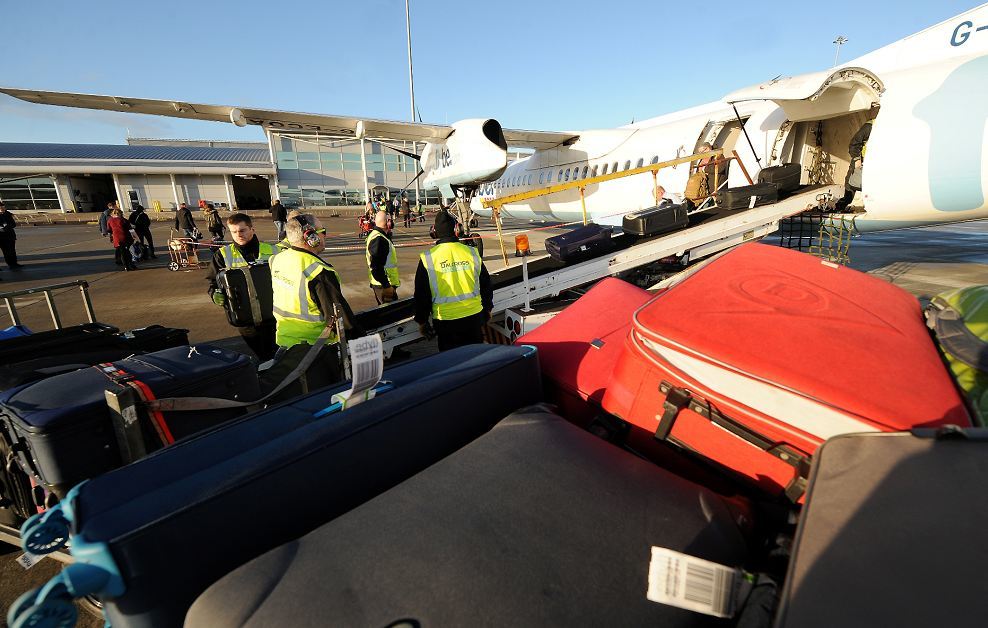As millions of people make their way home for Christmas, Press and Journal reporter Jamie McKenzie went behind the scenes at Inverness Airport to see how staff are coping with the busiest time of the year.
From checking in Christmas presents at the security gates to directing flights in cold and blustery weather, workers throughout Inverness Airport take on a number of extra challenges at this time of year.
With their minds on the long journey ahead, passengers often forget about restrictions on liquids in their hand luggage.
And wearing layers of winter clothing can increase cause delays when going through security checks.
Extra flights to London City, Dublin and Manchester have brought more people through the terminal and the pressure is on for staff to exhibit excellent customer service skills.
Beth Mayberry, a security supervisor at the airport, said: “At this time of year we find a lot of Christmas presents going through and we sometimes have to take that extra wee bit of time to explain to passengers the situation with liquids and use good customer service skills to explain why it should be in hold luggage.”
She added that other factors such as the higher number of people unaccustomed to the security check process – including children – can add to the time.
On the other side of check-in, in the baggage hall, six men were yesterday transferring hold luggage from the cargo belt onto trolleys for the afternoon’s Birmingham and Amsterdam flights.
Stuart Beaton, a ramp agent at the airport for more than four years, said there had been a visible change in luggage from golf bags to skis in the run-up to Christmas.
He added: “It is busier this time of year as everyone’s going up and down the road. I would say we have at least 50% more to do just now and it keeps us busy.”
And upstairs in the air traffic control tower were Dave Greer, unit competency manager, and Sean Toner, air traffic services assistant.
The air traffic controllers must adhere to strict regulations by working for a maximum two hours at a time due to the high levels of concentration needed for the job.
The pair said high wind speeds have been the biggest factor for take-offs and landings in recent weeks, causing some planes heading further north to be diverted to Inverness.
The Dalcross runway is aligned with the prevailing south westerly winds blowing in from Loch Ness, making it a more suitable place for landing.
Freezing conditions and snow have not yet been a problem, but the airport is now using a licensed airport specific Met office weather service for more frequent forecasts. This allows air traffic control to liaise with the fire service, which clears the runway of snow, to ensure action is taken quicker before conditions are allowed to worsen.
Mr Greer, who has 23 years experience at the control tower, said: “We have had to deal with the problem of wind speeds this winter and have had a number of aircraft diverted due to that, and I remember flights going to Wick and Kirkwall coming here instead.
“We tend to get lower temperatures and freezing conditions in January and February and then it is a case of de-icing. We are quite experienced here and the fire service here are good at dealing with that.”
Mr Toner, who has worked in the tower for three years, said it was important to know what to tell a pilot, including when a flock of birds is close to the runway.
He added: “It depends on how close the pilot is to the approach. If he has plenty of time, he will be able to make a decision to avoid the runway. Sometimes it is better not to say anything if they are really close.”
